
Chantilly is a commune in the Oise department in the Valley of the Nonette in the Hauts-de-France region of Northern France. Surrounded by Chantilly Forest, the town of 10,863 inhabitants (2017) falls within the metropolitan area of Paris. It lies 38.4 km north-northeast of the centre of Paris and together with six neighbouring communes forms an urban area of 37,254 inhabitants (2018).

Louis Scutenaire was a Belgian French-language poet, anarchist, surrealist and civil servant. Born Jean Émile Louis Scutenaire in Ollignies, he died in Brussels.

The arrondissement of Senlis is an arrondissement of France in the Oise department in the Hauts-de-France region. It has 132 communes. Its population is 281,760 (2016), and its area is 1,344.2 km2 (519.0 sq mi).
Richard Guino was a French sculptor of Catalan origin.

Aimé Nicolas Morot was a French painter and sculptor in the Academic Art style.

Charles L'Éplattenier was a Swiss painter and architect who created the Swiss version of Art Nouveau, called Style Sapin.
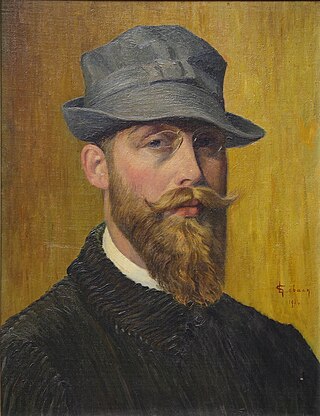
Georges-Émile Lebacq was a Belgian painter.
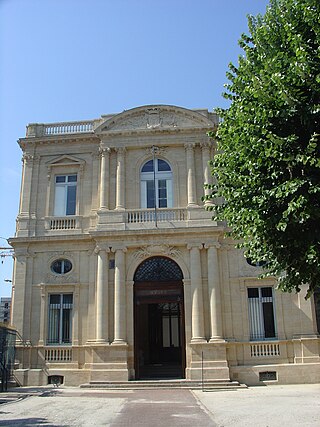
The Musée des Beaux-Arts de Bordeaux is the fine arts museum of the city of Bordeaux, France. The museum is housed in a dependency of the Palais Rohan in central Bordeaux. Its collections include paintings, sculptures and drawings from the 15th century to the 20th century. The largest collection is composed of paintings, and its strong points are works by French, Flemish painters and Dutch painters.
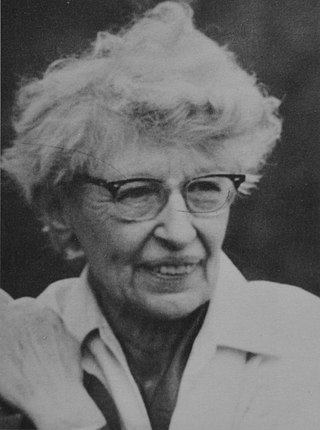
Éliane Georgette Diane de Meuse was a Belgian painter. She was the wife of Max Van Dyck. They met at the Académie Royale des Beaux-Arts, Brussels where they attended the courses of the same professors.

Jean Messagier was a French painter, sculptor, printmaker and poet. Jean Messagier had his first solo exhibition in Paris at Galerie Arc-en-Ciel in 1947. From 1945 to 1949 the artist worked under the influence of Pablo Picasso, André Masson, Paul Klee and François Desnoyer, his professor at École nationale supérieure des arts décoratifs in Paris. Messagier again was revealed to the public at an exhibition organized by Charles Estienne at the Galerie de Babylone in 1952, entitled "La Nouvelle École de Paris". The following year, Messagier deliberately broke away from his expressionistic form of Post-Cubism; his inspirations now focused on Jean Fautrier and Pierre Tal-Coat to develop a personal vision in which he renders "light...approached abstractly." Jean Messagier is often associated with Lyrical abstraction, Tachisme, Nuagisme, Art informel and paysagisme abstrait, though the artist himself had never accepted any labels, and had always refused the distinction between abstraction and figuration. From 1962 until the year of his death Jean Messagier exhibited in France and abroad, taking part in some major international events as a representative of new trends in French painting.
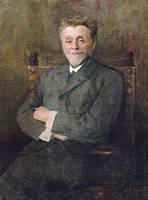
Léonce Bénédite was a French art historian and curator. He was a co-founder of the Société des Peintres Orientalistes Français and was instrumental in establishing Orientalist art as a legitimate genre.
Marianne Loir or Marie-Anne Loir was a French painter who specialized in portraits.

Henri Clément Serveau, also known as Clément-Serveau, was a French painter, designer, engraver and illustrator. Clément-Serveau produced works in a realist manner early on, but soon became interested in the new movements. He was influenced by his friend Louis Marcoussis and experimented with Cubism, utilising geometric patterns to give the illusion of form and space. Later in his career, he turned toward abstraction with a post-cubist stance. He designed banknotes for the Banque de France, produced large murals and participated in numerous French and international exhibitions.

Albert Lebourg, birth name Albert-Marie Lebourg, also called Albert-Charles Lebourg and Charles Albert Lebourg, was a French Impressionist and Post-Impressionist landscape painter of the Rouen School. Member of the Société des Artistes Français, he actively worked in a luminous Impressionist style, creating more than 2,000 landscapes during his lifetime. The artist was represented by Galerie Mancini in Paris in 1896, in 1899 and 1910 by : Galerie Bernheim-Jeune, 1903 and 1906 at the Galerie Paul Rosenberg, and 1918 and 1923 at Galerie Georges Petit.

Didier Ottinger, born in Nancy in 1957, is a French museum curator, art critic and author. He is known for organizing exhibitions and publishing books on modern and contemporary painting. He is now assistant director of the Centre Pompidou at the Musée national d'art moderne in Paris.
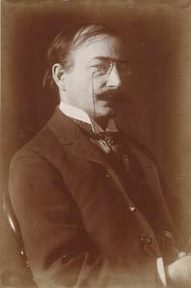
Henri Beau was a French-Canadian Impressionist painter. He is noted for Chemin en été, La dispersion des Acadiens, L'arrivée de Champlain à Québec, and Les Noces de Cana. Beau is a largely forgotten artist due to his long absence from Canada. His widow Marie Beau worked towards establishing his reputation as an artist in Canada after his death. He was only recognized as a notable artist decades later, with major retrospectives of his paintings celebrating his career by the Galerie Bernard Desroches in Montréal in 1974, and at the Musée du Québec in Québec City in 1987.
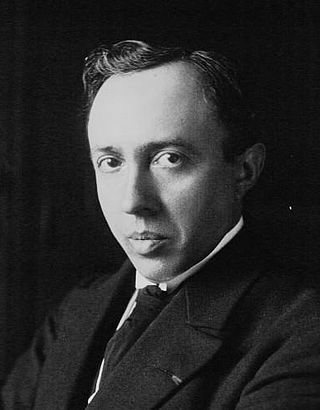
Raymond Escholier, real name Raymond-Antoine-Marie-Emmanuel Escolier, was a French journalist, novelist and art critic. He was curator of the Maison de Victor Hugo and of the Petit Palais.

Auguste-Xavier Leprince was a French artist and painter who attained celebrity at the age of seventeen. His patrons included the Duchesse de Berry, Charles X, and Alexandre du Sommerard. He was also a teacher; in his twenties he established his own atelier in Paris, with pupils including his two younger brothers, Robert-Léopold and Pierre-Gustave, as well as Eugène Lepoittevin and Nicolas Alexandre Barbier. His meteoric career came to an abrupt end and his "brilliant promise was cut short by his premature death at the age of twenty-seven."
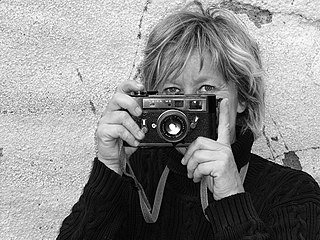
Claire Beaugrand-Champagne is a Canadian documentary photographer. She is known for her socially engaged work and, having started her career in 1970, is considered the first female press photographer in Quebec. She was a member of the Groupe d'action photographique (GAP) alongside Michel Campeau, Gabor Szilasi, Roger Charbonneau et Pierre Gaudard
































